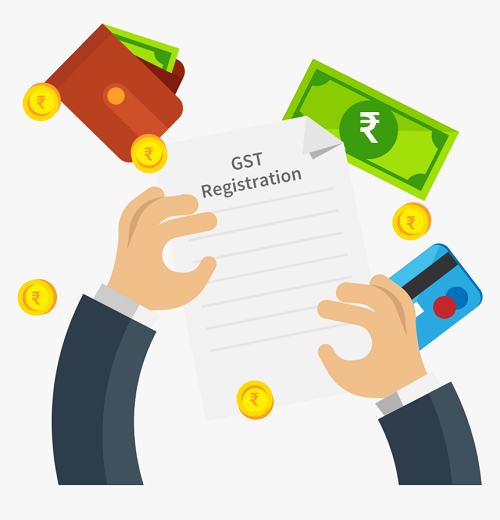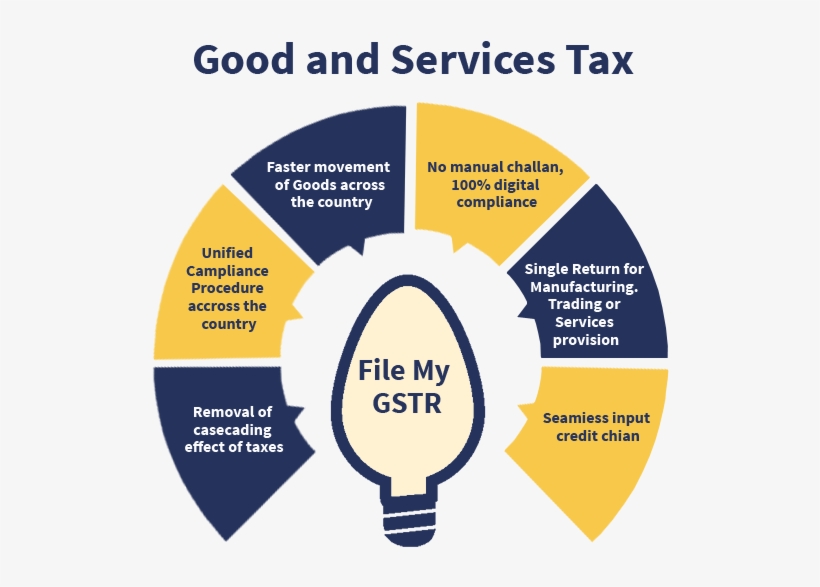A Brief on recent development of GST Registration and its benefits

The Goods and Services Tax is an indirect tax that is primarily levied by the government on the provision of goods and services rather than a person’s income, profit, or revenue. Several central-level taxes, including the Central Excise Duty, Sales Tax, Service Tax, and Special Additional Customs Duty, are included in the GST. as well as state-level taxes like the State VAT, the Luxury Tax, the Entertainment and Amusement Tax, the Purchase Tax, the Entry Tax, and the Transfer Tax, among others. are merged into a single regime. The nation is making a reality of one nation, one tax, and one market by implementing the GST.
Background:
Since its independence, India has imposed a variety of direct and indirect taxes on its citizens. In 1999, former Prime Minister Atal Bihari Vajpayee established a committee to implement GST nationwide, which was carried out in 2017 by the current Prime Minister, Narendra Modi. The committee was led by the then-West Bengal Finance Minister, Asim Dasgupta.
In 2003, the finance minister at the time, Jaswant Singh, initiated an amendment to the service tax provision that included GST in a few parts.[1] The report that Jaswant Singh drafted suggested that the federal government and the states each implement 5% and 7% of GST, respectively. The GST can be registered through GST consultants in Coimbatore.

Dual GST model in India:
The GST structure in India has two components for taxation, as the name suggests: the Central Goods and Services Tax (CGST) and the State Goods and Services Tax (SGST) or Union Territories Goods and Services Tax (UTGST) are levied by the Central government and collected by the State government in Union Territories without legislatures, respectively.
The Central Government also collects taxes under the Integrated Goods and Services Tax (IGST), which is applied to the interstate (between two different states or a state and a union territory) supply of goods and/or services as well as imports and exports.
The goal of this Dual GST Model is to create a nation with transparent and straightforward tax collection methods in addition to a pre-defined set of CGST and SGST rates. The VAT sector particularly benefits from the IGST-specific model. Hence approaching GST consultants in Coimbatore is important.
After adjusting the credits of CGST, IGST, and SGST on purchase, this model predicts that interstate suppliers will be subject to IGST on value addition, and the exporting state will transfer the SGST credit used to pay IGST to the central government.
After that, the receiver from the state that is importing the goods will make use of this credit to satisfy his output tax obligation in that state, and the Centre will then transfer this credit to the state that is importing the goods.
Benefits of GST
After GST registration in Tamil Nadu there are many benefits.
The elimination of the “cascading effect of tax,” also known as “tax on tax,” is one of the biggest advantages of GST which has GST registration in Tamil Nadu.
Similar to the compounding effect, a cascading tax is typically imposed on each step of the product supply chain, resulting in a higher tax rate than the official rate and ultimately raising the price of the product.
Through GST which can have GST registration in Tamil Nadu, consumers are exempt from this cascading effect because the tax is imposed only on the values that the latest seller has added to the goods and services, in contrast to the compounding effect.
The ease with which businesses can conduct business both domestically and internationally has been added to the GST’s list of benefits. Companies no longer have to deal with as many problems when it comes to filing indirect taxes. When you approach GST consultants in Coimbatore, filing then becomes easy.
Under the GST system, online portals handle every process for GST registration in Tamil Nadu through a single gateway. As a result, the tax administration process is completed quickly, efficiently, and without any problems.
The Goods and Services Tax Network (GSTN), a tax platform that handles all relevant aspects of GST, is its backbone.
As prices fall, consumers’ consumption rates will rise at a faster rate, which will be beneficial to businesses.

GST exemption list and rate structure:
The unique socio-economic procurement is taken into consideration when formulating the GST rate structure, which consists of 5 percent, 12 percent, 18 percent, and 28 percent. The proportion of CGST and SGST among the aforementioned rates is comparable. Any type of GST can have registration by GST consultants in Coimbatore.
According to section 2(47) of the CGST Act of 2017, there is a list of goods and services that are not subject to GST.
These exemptions are referred to as exempted supplies. An exempt supply is the supply of any goods or services or both that attract a nil rate of tax or may be wholly exempt from tax under section 11 or section 6 of the Integrated Goods and Services Tax Act, and it also includes the non-taxable supply.
A supply of goods or services, or both, that is exempt from taxation under this Act or the Integrated Goods and Services Tax Act is another type of non-taxable supply that is exempted under Section 2(78) of the Act. Take, for instance, alcohol meant for human consumption. Any type of GST can have GST filing in Coimbatore.
Last but not least, there are products, such as salt, that are exempt from taxation entirely or at zero percent. Absolute Exemption, Conditional Exemption, and Partial Exemption are the three types of exemptions that are available.
Under Absolute exemption, the supply is exempted without taking into account the territory to which it is being delivered or the note of the supplier or receiver; however, under Conditional exemption, the supply is exempted subject to the terms and conditions outlined in the GST Act or any notification or amendment in this regard.
Under Partial exemption, unregistered individuals can be exempted if the total value of a supply does not exceed Rs. 5,000 daily.
Live creatures, meat, live trees, vegetables, water, petroleum derivative, medications and drugs, textures, leafy foods natural products, non-eatable creature items, tea, espresso, flavors, processing industry items, gums/pitches, sugar/jaggery, composts, cotton materials, and so on are among the exempt items.
Development under 47th GST council meeting
The Finance Minister Nirmala Sitharaman presided over the meeting, which was held on June 28 and 29, 2022, with the intention of revising and altering the current GST rates. Rates for several items were raised and many items that were previously on the exemption list were removed. These changes went into effect on July 18, 2022.
Such GST can have registration by GST consultants in Coimbatore.
Conclusion
India was able to make “One Nation, One Tax, One Market” a complete reality thanks to the GST system, which eliminated all existing Central and State taxes.
Additionally, it ended the lengthy practice of “tax on tax.” As a result of GST, goods and services were made available at a specific rate across the nation, increasing consumer profitability.
